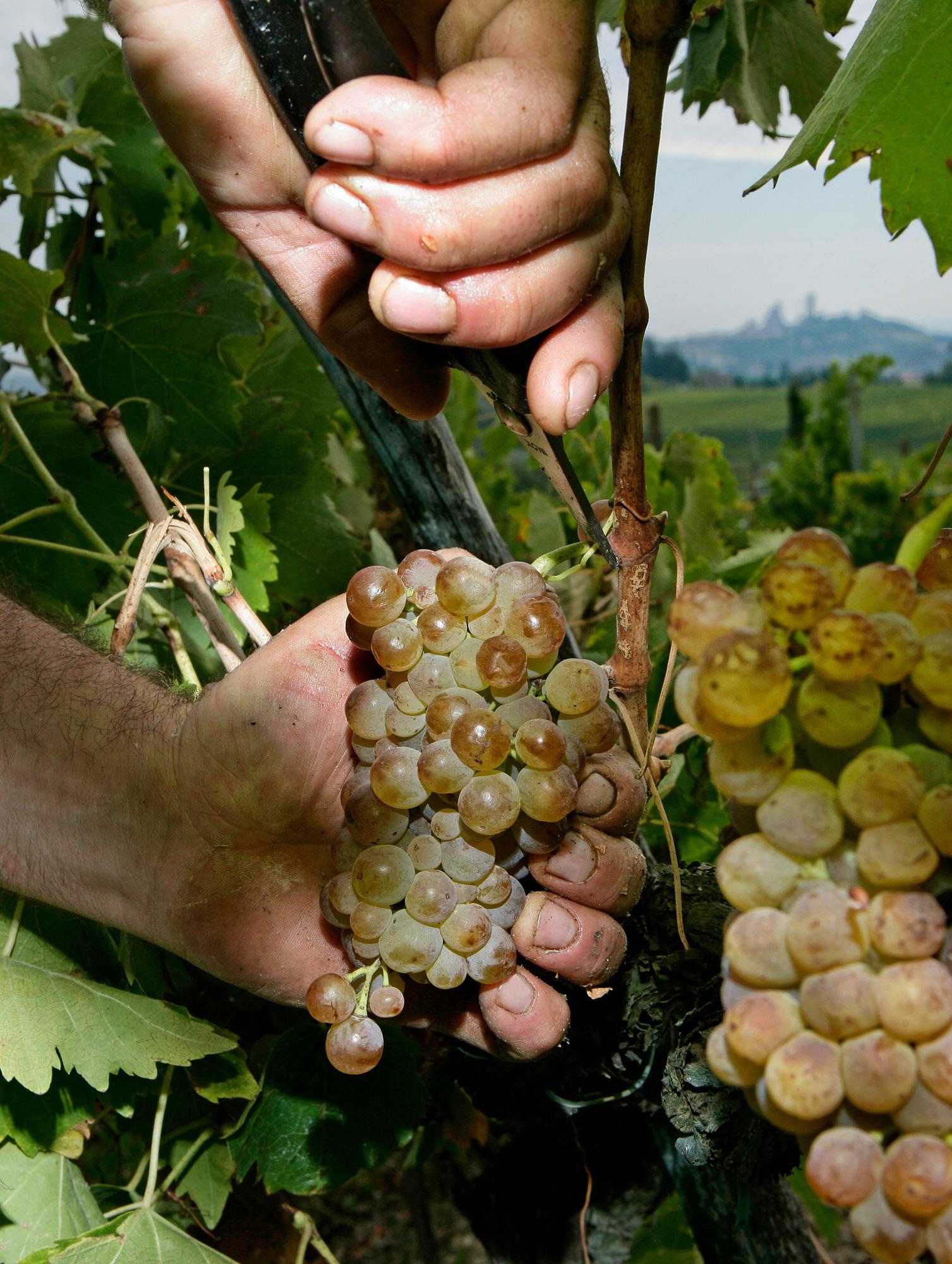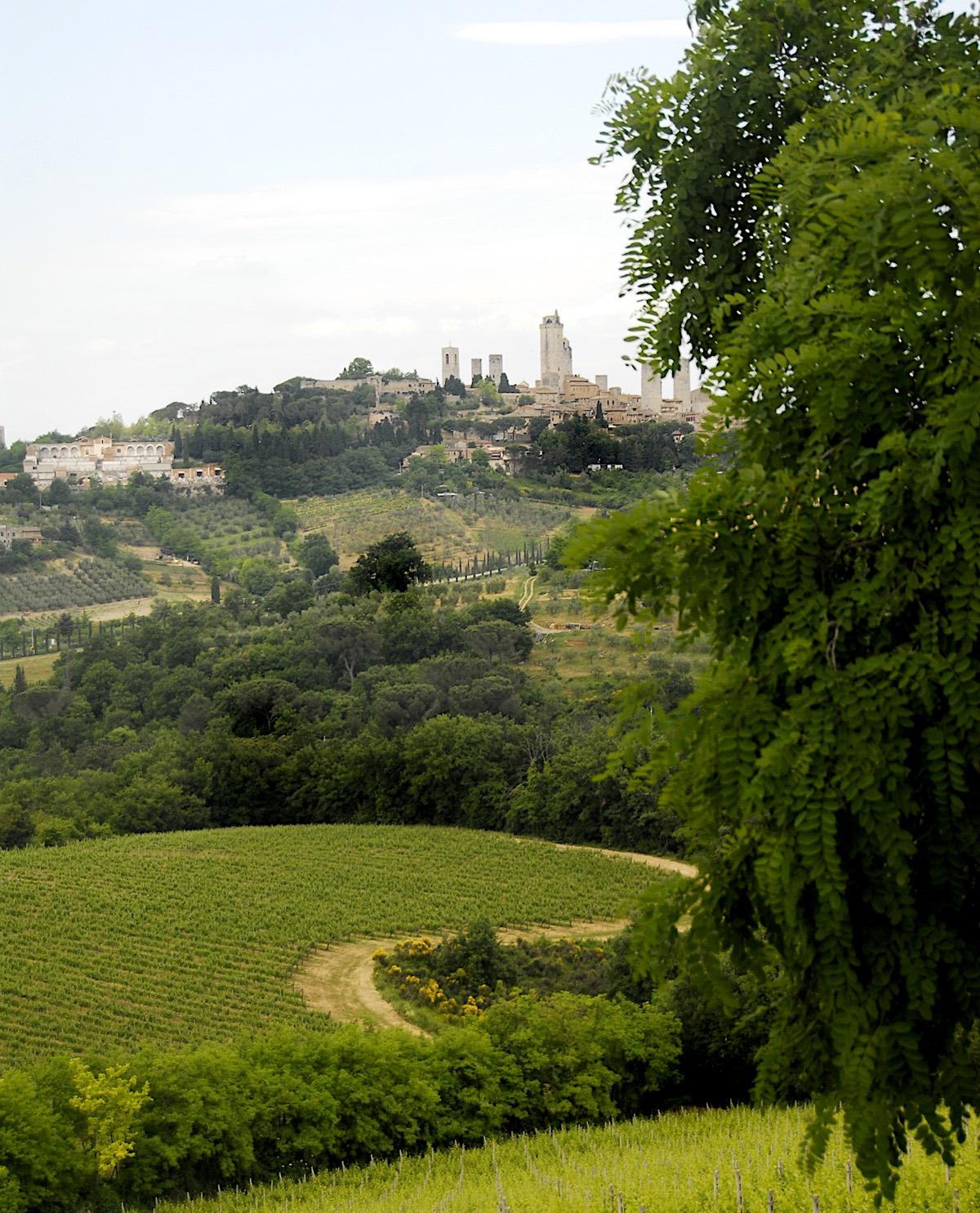Vernaccia di San Gimignano
San Gimignano is located in the heart of Tuscany, in a region known throughout the world for its excellent red wines. But the heart of Tuscany is white, and the Vernaccia that comes from here is Italy’s most ancient white wine, a rare wine – because this is the only place where these vines are cultivated and turned into wine – which originates from the autochthonous grape variety that bears the same name.
No other Italian wine can boast such a long history. The earliest recorded mentions of Vernaccia di San Gimignano date back to the thirteenth century, and its history merges with the history of the town of San Gimignano: a significant production during the Middle Ages and the Renaissance, followed by a long period of slow decline which lasted until the second half of the twentieth century, when it was able to renew its fame and enjoy new success.

Since the beginning of the 14th century, Vernaccia di San Gimignano wine has been well-known and loved by all Italian and European aristocracy. Princes and rich merchants were not the only ones, as the Popes also appreciated Vernaccia di San Gimignano. The most famous literary quote of Vernaccia di San Gimignano can be perhaps attributed to the poet Dante Alighieri who, in his Divine Comedy (Purgatory, Canto XXIV), sends Pope Martin IV to Purgatory to atone for his sins of gluttony, particularly for Bolsena eels steeped in Vernaccia.
What’s more, from the artists and writers of that period we discover a “spicy” reason for the success of this wine, which Michelangelo Buonarroti describes by saying that it “bacia, lecca, morde, picca, punge" (kisses, licks, bites, pinches and stings). Indeed, several authors exalted the particular miraculous and aphrodisiac properties of Vernaccia di San Gimignano, which healed the body, instilled courage and increased virility in men and fertility in women, so much so that Geoffrey Chaucer has the old Januarie drink some Vernaccia in order to get through the night with his young bride!

Perhaps this is the reason why at wedding banquets of noble families throughout Europe, Vernaccia di San Gimignano never failed to show up on the tables. In 1465, this wine sparkled in the goblets at the wedding of Bernardo Rucellai and Nannina Medici, sister of Lorenzo the Magnificent. Outside of Tuscany, in 1487, Ludovico il Moro (the Moor), lord of Milan, demanded 200 flasks of Vernaccia from the Municipality of San Gimignano for the wedding banquet of a member of the Visconti family to Isabella, daughter of the king of Naples.
Vernaccia di San Gimignano had a power so great and unchallenged that Francesco Redi, the personal physician to Ferdinand III of Tuscany, in his work “Bacco in Toscana” (Bacchus in Tuscany) went so far as to invoke a curse when talking about it: «Se vi è alcuno a cui non piaccia / La Vernaccia / Vendemmiata in Pietrafitta, / interdetto, / maladetto, / fugga via dal mio cospetto» (If there is anyone who does not like Vernaccia harvested in Pietrafitta, he shall be banished and cursed and shall flee from my sight).
Read more about the history of Vernaccia at Vernacci.it >
